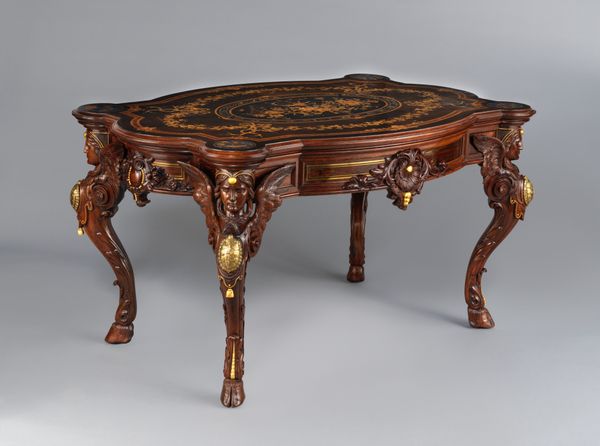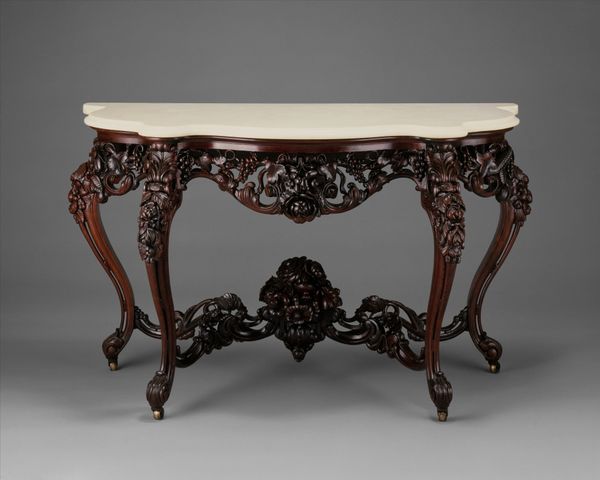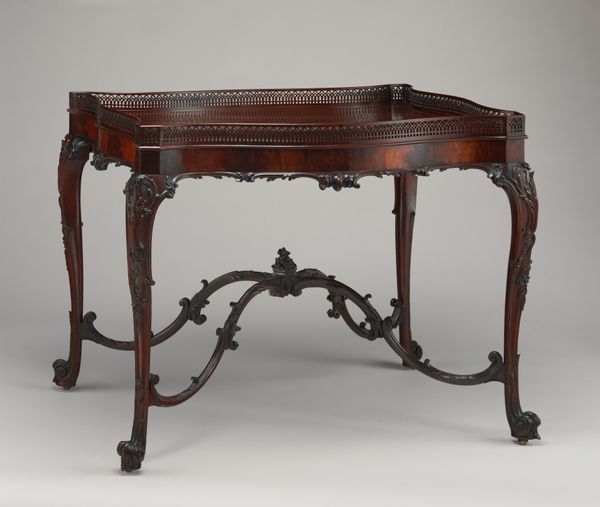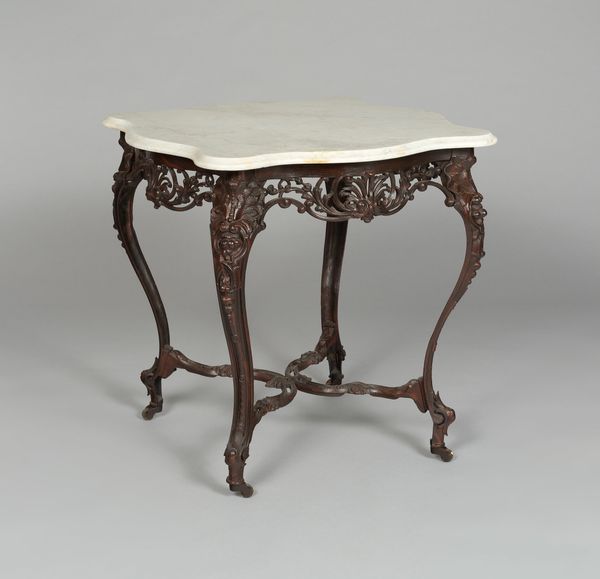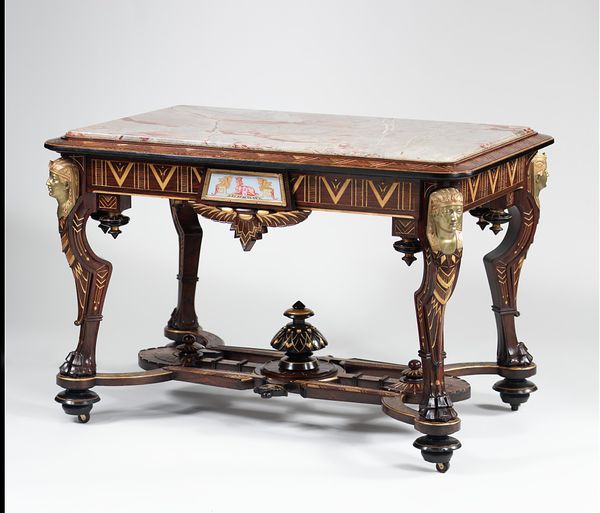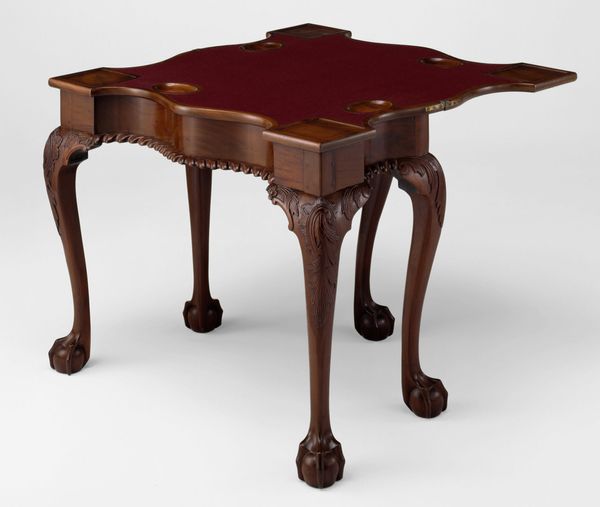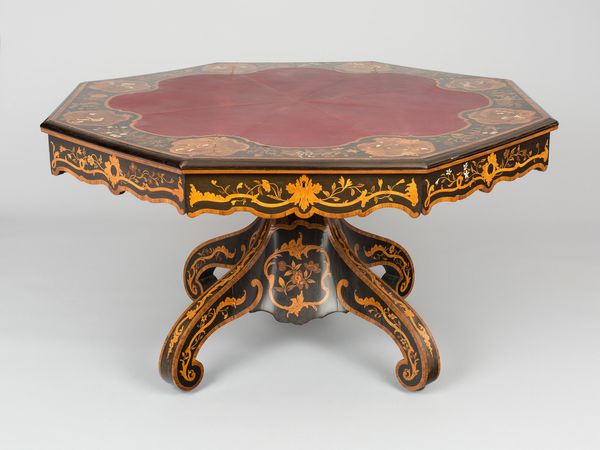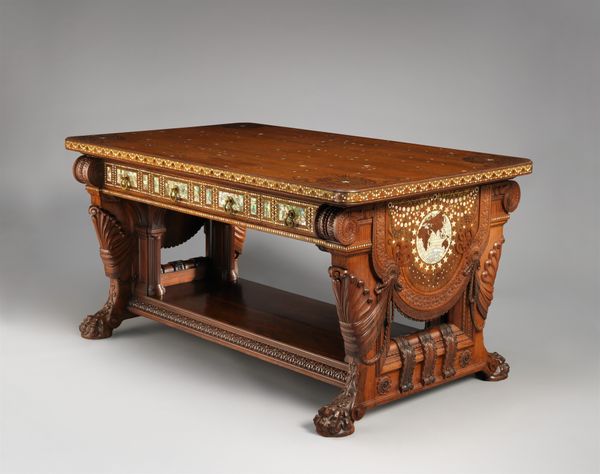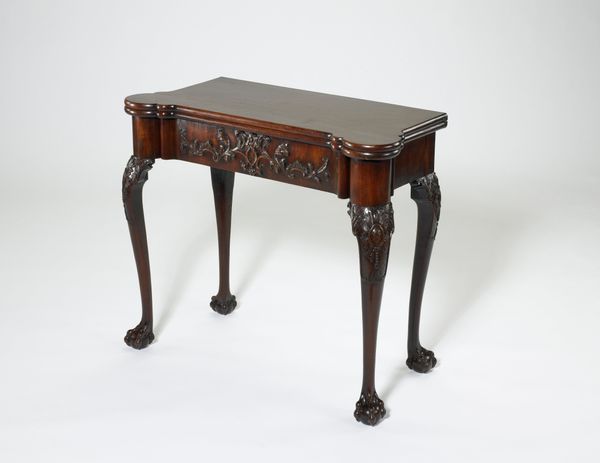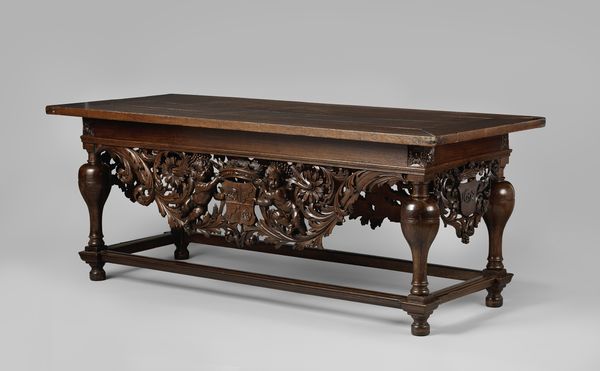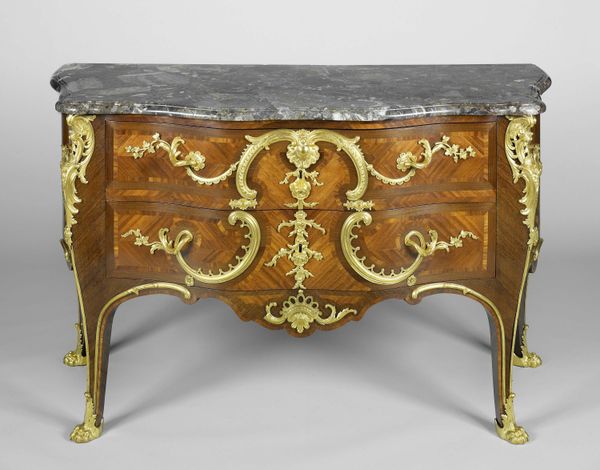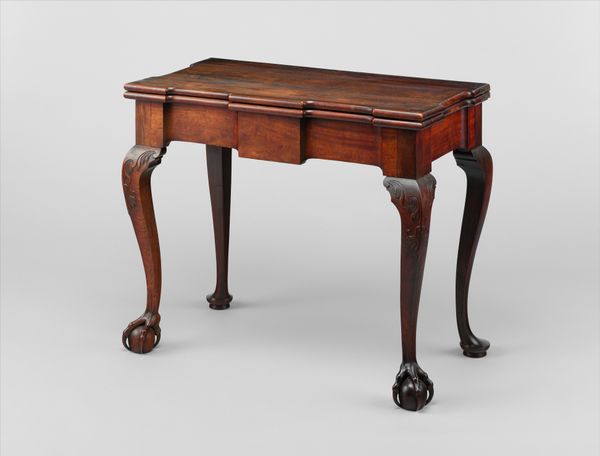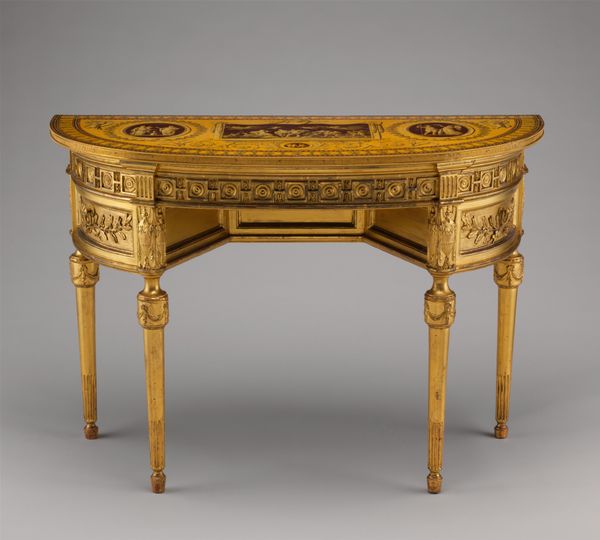
Dimensions: 73.7 × 119.4 × 81.3 cm (29 × 47 × 32 in.)
Copyright: Public Domain
This center table, made by Doe, Hazelton and Company, is adorned with powerful symbols that speak volumes about its cultural context. Note the recurring motif of grapes and vines. This symbol of abundance and fertility, deeply rooted in classical antiquity, surfaces time and again in art history. Consider the Dionysian festivals of ancient Greece, where grapes were not merely fruit, but potent symbols of ecstasy, transformation, and the life force itself. This motif resurfaces during the Renaissance, adorning Bacchus, the god of wine, and other artworks, echoing themes of revelry and the cyclical nature of life. In the collective unconscious, the image of grapes elicits feelings of warmth, pleasure, and the bounty of nature. It is a visual embodiment of our primal connection to the earth and its gifts, engaging viewers on a visceral, almost subconscious level. The evolution of such a symbol isn't linear; it's a meandering path through history, resurfacing in unexpected places, bearing the weight of accumulated meanings.
Comments
No comments
Be the first to comment and join the conversation on the ultimate creative platform.
